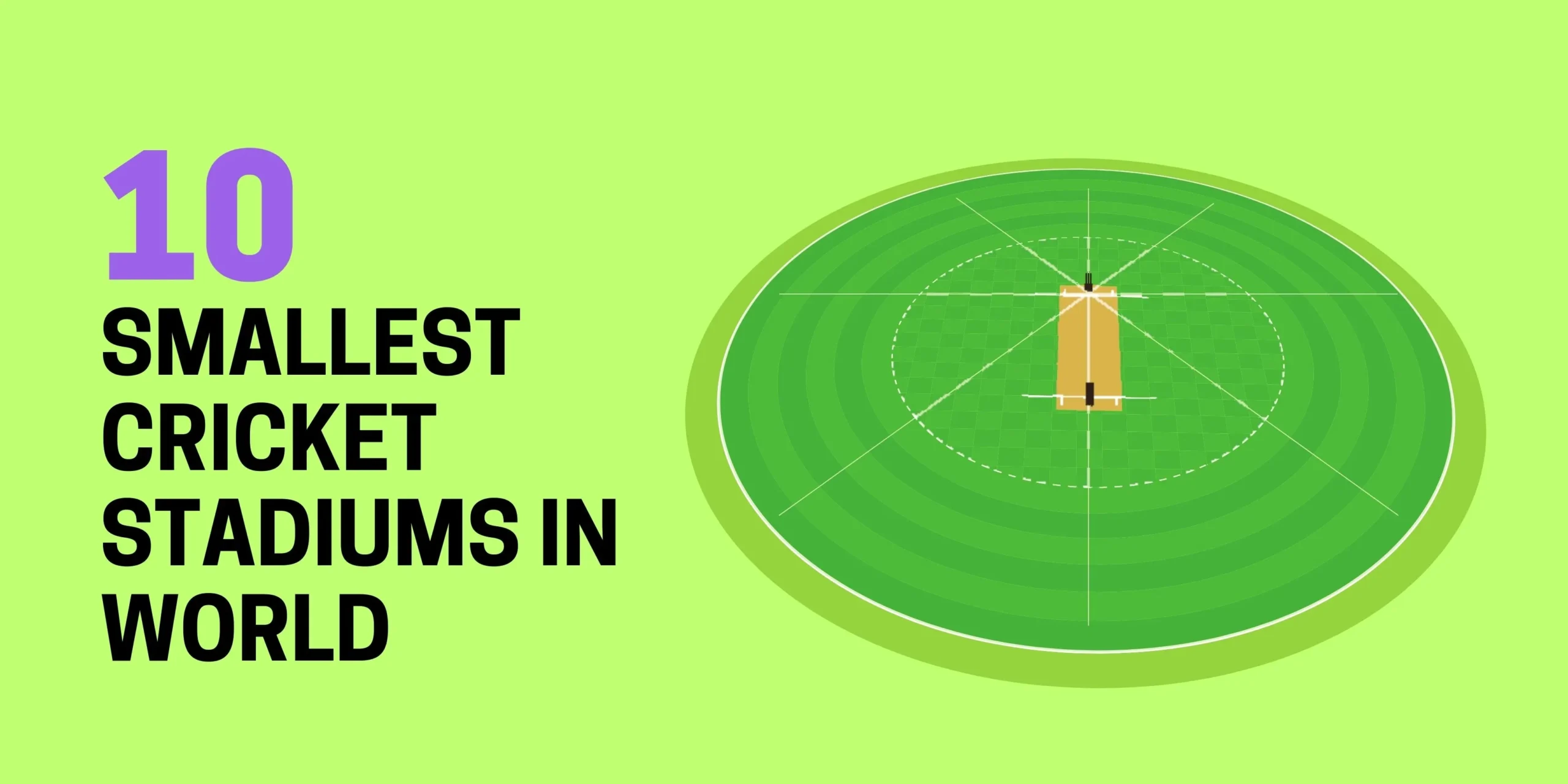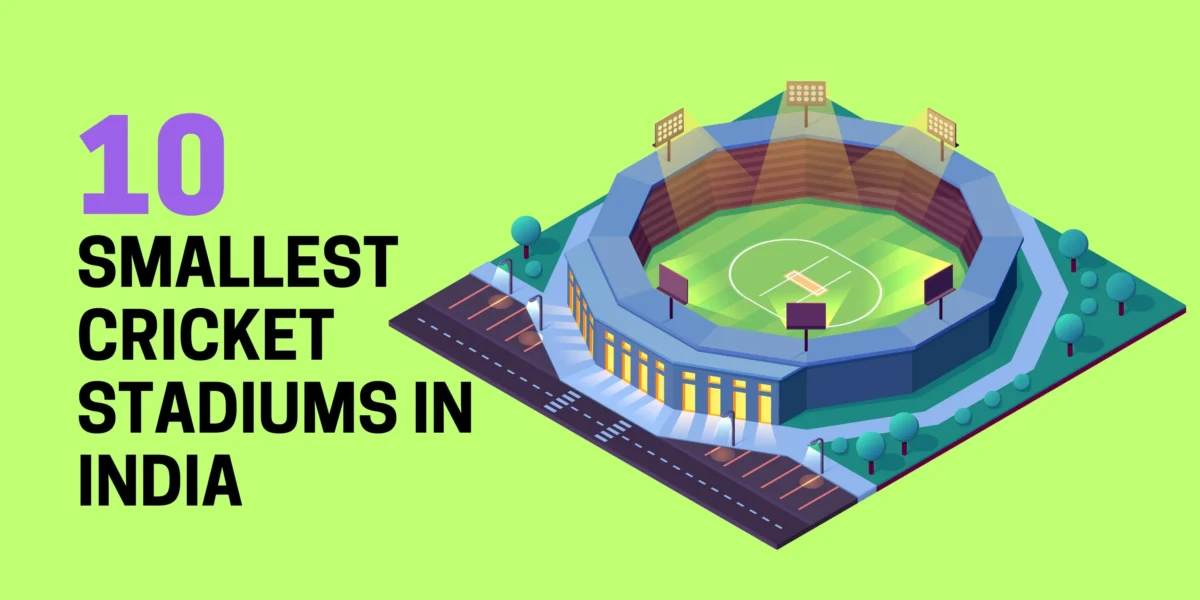The crowd’s roar in a packed cricket stadium is a symphony for any cricket fan. While massive, iconic stadiums dominate the headlines, smaller grounds hold a special place in the hearts of enthusiasts. Let’s explore smallest cricket stadium in India and the world and discuss what makes them unique.
Smallest Cricket Stadiums in India
- Smallest Overall: Himachal Pradesh Cricket Association Stadium (HPCA Stadium) in Dharamshala takes the crown with a capacity of approximately 23,000. Its stunning backdrop of the Himalayas makes it a visual delight.
- Smallest by Boundary: Official boundary sizes are only sometimes publicly available. However, some stadiums known for relatively more minor boundaries include:
- Holkar Stadium, Indore
- M. Chinnaswamy Stadium, Bangalore
- Feroz Shah Kotla Ground, Delhi
- Smallest in the IPL: The HPCA Stadium has been a home ground for the Punjab Kings (formerly Kings XI Punjab), showcasing that small stadiums can host thrilling IPL matches.
Top 10 Smallest Cricket Stadiums in India
- Himachal Pradesh Cricket Association Stadium, Dharamshala
- Madhavrao Scindia Cricket Ground, Rajkot
- Green Park Stadium, Kanpur
- Sector 16 Stadium, Chandigarh
- Barkatullah Khan Stadium, Jodhpur
- Nehru Stadium, Guwahati
- Captain Roop Singh Stadium, Gwalior
- Moti Bagh Stadium, Vadodara
- Keenan Stadium, Jamshedpur
- Greater Noida Sports Complex Ground, Greater Noida
Smallest Cricket Stadiums in the World (By capacity)

India doesn’t have a monopoly on charming small stadiums. Here’s a look at the top 10 smallest international cricket stadiums worldwide:
| Sr. No. | Name of the Stadium | City and Country | Capacity |
| 1 | Sano Cricket Ground | Sano, Japan | 2000 |
| 2 | Jeffery Sports Club Ground | Nairobi, Kenya | 2000 |
| 3 | Royal Brussels Cricket Club | Waterloo, Belgium | 1500 |
| 4 | Hong Kong Cricket Club | Wong Nai Chung Gap, Hong Kong | 1500 |
| 5 | Pingfeng Campus Cricket Field | Hangzhou, China | 1347 |
| 6 | Pierre Werner Cricket Ground | Walferdange, Luxembourg | 1000 |
| 7 | Mombasa Sports Club Ground | Mombasa, Kenya | 1000 |
| 8 | Ruaraka Sprots Club Ground | Nairobi, Kenya | 1000 |
| 9 | White Hill Field | Sandys Parish, Bermuda | 1000 |
| 10 | Kowloon Cricket Club | Kowloon, Hong Kong | 1000 |
Other Smallest Cricket Stadiums in the World
- Central Broward Regional Park Stadium Turf Ground, USA
- Terdthai Cricket Ground, Thailand
- Bermuda National Stadium, Bermuda
- Kyoto Cricket Ground, Japan
- Maple Leaf North-West Ground, Canada
- El Cortijo Polo Club Ground, Spain
- Marina Ground, Malta
- Bayuemas Oval, Malaysia
- Moara Vlasiei Cricket Ground, Romania
- Svanholm Park, Denmark
Which Stadium is Smallest in the World?
While it’s difficult to pinpoint the absolute smallest with complete certainty, some contenders for the world’s smallest cricket stadium title include local club grounds or makeshift fields in remote locations.
Small Cricket Ground Size
Interestingly, there are no strict, official size regulations for cricket grounds! The ICC guidelines focus on boundary lengths:
- Minimum: 59.43 meters (65 yards) from the center of the pitch
- Maximum: 82.29 meters (90 yards)
Is Chinnaswamy a Small Ground?
Yes, the M. Chinnaswamy Stadium in Bangalore is considered one of India’s smaller international cricket grounds. It’s famous for its short boundaries and high-scoring matches.
Which Stadium is Smaller: Wankhede or Chinnaswamy?
The Chinnaswamy Stadium is generally considered smaller due to its shorter boundaries.
The Allure of Small Cricket Stadiums
- Intimate Atmosphere: Fans are closer to the action, fostering a greater sense of connection.
- Favorable to Batsmen: Smaller boundaries often lead to exciting, high-scoring encounters.
- Picturesque Settings: Many smaller stadiums boast stunning natural backdrops.
Conclusion
Cricket’s magic doesn’t always need a massive stage. Whether it’s the thrill of a six barely clearing the boundary rope in a picturesque ground or the electric atmosphere of a tightly packed crowd, more minor stadiums offer a unique and unforgettable experience.
The next time you plan your cricket adventures, remember that sometimes the most extraordinary moments happen in minor fields.
James Paul is a former first-class cricketer and passionate cricket analyst. His decades of experience on the field and his love for the game shape his insights into the strategies and personalities that define world-class cricket.
